I have been contemplating writing this article(s) for quite a while. I had a few photographs taken over the years, but when a friend on the mainland (Steve Ruddy) sent some coral parasite – ‘bug’ – photos, that did it – it was time to do some further research and get this all on paper (or the internet, as the case may be).
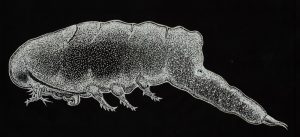
Figure 1. The parasitic copepod Kombia angulata, a species found on or in stony corals Psammocora and Porites. Drawing by the author, after Humes and Stock, 1972.
The title of this article is a reflection on the state of the art of the reef aquarium hobby – advanced aquarists have reached a point where most of the captive reef’s husbandry issues have been resolved. We can now concentrate on issues on other than the Big Four (temperature, lighting, water motion, and water chemistry).
There is quite a pool of coral parasite research available, but these research articles are disjointed and scattered among the internet and some obscure journals. Early books for hobbyists have briefly examined coral predators and parasites (Wilkens, 1990; Wilkens and Berkholz, 1986; Sprung and Delbeek, 1997; Delbeek and Sprung, 1994; Delbeek and Sprung, 2005), yet parasitic copepods are only briefly discussed. The goal of this article is to consolidate some of these resources in a concise reference. With this said, we know relatively little about coral parasites, although this article will examine almost 250 species belonging to over 30 genera that are known parasites of stony corals. There are probably thousands of coral parasites yet to be scientifically described.
Bear in mind that an observation made in an aquarium has a fair chance of being a first, and I encourage hobbyists to document their experiences, and truly appreciate those hobbyists who have shared their observations with me.
Before we begin our discussion, perhaps a quick review of terms (pertinent to this and following articles) is in order:
- Commensal:
- Organisms living in, or, or with another without injury or harm to the other.
- Copepod:
- Small aquatic crustaceans of the Subclass Copepoda, usually having 6 pairs of legs. Some copepods are parasites.
- Ectoparasite:
- A parasite living on the exterior of its host.
- Endoparasite:
- An internal parasite.
- Flatworm:
- Worms of the phylum Platyhelminthes. Some are parasitic.
- Nudibranch:
- Literally ‘naked gills’ – these mollusks (suborder Nudibranchia) often have branched respiratory organs on their backs and/or sides. Some nudibranchs eat corals.
- Parasite:
- An organism that derives nutriment from another organism (known as the host), and at the expense of the host. From the Greek work parasitos, literally ‘one who eats at another’s table’.
- Predator:
- An organism that survives by consuming other organisms.
- Symbiosis:
- Organisms mutually benefiting from living on, in, or with another.
- Symbiont:
- A partner in symbiosis.
Here we report on coral parasites that have rather specific dietary requirements, how to control them, and other observations.
Copepods
Copepods (meaning “oar feet”) are crustaceans and are found in an astounding number of environments, including wet terrestrial leave litter, wet leaves, fresh water lakes, ponds, and streams, salt lakes, and numerous marine environments ranging from the arctic to tropical environs. Their adult size is small (up to about ~3.5mm – ~1/8″ – for coral parasites) but more often smaller, with females usually larger than males. Careful examination will usually reveal them to the unaided eye, but be aware some are transparent or assume the color of the host.
Copepods have a tough exoskeleton that is shed as the animal grows. Sub-adult and many adult copepods have a single eye which is usually red in transmitted light (that is, under a microscope). Antennae (two sets), maxillipeds, and a set of secondary maxilla can collect and push food to the mandible. Food is processed in an intestine (often of a different color from the body); waste is discharged through an opening in the anal segment. Egg sacs are projections of the genital segment in females. Swimming legs are articulated appendages of the metasome (a subsection of the prosome). Two ‘tails’ (fural rami) radiate from a structure called the caudal ramus.
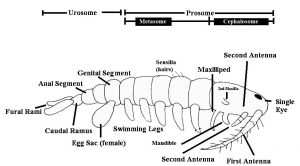
Figure 2. Copepod anatomy. These terms should be familiar to those wishing to identify parasitic copepods.
Copepods are usually present, at least to some degree, in marine aquaria. They serve as food sources for many marine animals and their presence is generally beneficial. Live, frozen, or freeze-dried copepods are often added to aquaria as sustenance for fishes and marine invertebrates.
Most copepods feed on bacteria, diatoms or other small food particles. However, some have specialized diets and are associated with specific animals, including soft and stony corals, gorgonians, Tridacna clams, and so on.
Parasitic Copepods
Some copepod species are known parasites of stony corals, soft corals, anemones, Tridacna clams, starfish, and many other invertebrates, although the number of parasitic bugs is small when compared to the number of non-parasitic copepods (parasitic copepods are perhaps 15% of the number of ‘bugs’ known to inhabit invertebrates, according to copepod guru Arthur Humes). It is popular among hobbyists to lump parasitic crustaceans into loose categories called ‘red bugs’ and ‘black bugs’. In addition, red bugs are typically ascribed by hobbyists to a single species (Tegastes acroporanus – although this ‘bug’ is officially described as occurring in only a single coral species – the Pacific stony coral Acropora florida), due in large part by an article written in 2002 by Ron Shimek. Actually, corals can be infested externally or internally by quite a number of parasitic copepod genera, including Alteuthellopsis,
Xarifia, Stockia, Humesiella, Tegastes, Parategastes, Orstomella, Zazaranus, and many others. See Table One.
See Table Two at the end of this article for a listing of Coral Hosts and Copepod Parasites (by species).
| Genus | Family | Order | # Species |
|---|---|---|---|
| Acontiophorus | Siphonostomatoida | Asterocheridae | 1 |
| Alteuthellopsis | Harpacticoida | Peltidiidae | 1 |
| Amarda | Poecilostomatoida | Anchimolgidae | 4 |
| Anchimolgus | Poecilostomatoida | Anchimolgidae | 32 |
| Andrianellus | Poecilostomatoida | Anchimolgidae | 2 |
| Armadopsis* | Poecilostomatoida | Lichmolgidae | 1 |
| Asterocheres | Siphonostomatoida | Asterocheridae | 1 |
| Cerioxynus | Poecilostomatoida | Lichomolgidae | 6 |
| Corallonoxia | Cyclopoida | Corallovexiidae | 2 |
| Corallovexia | Cyclopoida | Corallovexiidae | 8 |
| Diallagomolgus | Poecilostomatoida | Rhynchomolgidae | 2 |
| Dumbeana | Poecilostomatoida | Anchimolgidae | 1 |
| Ecphysarion | Poecilostomatoida | Anchimolgidae | 3 |
| Gelastomolgus | Poecilostomatoida | 1 | |
| Haplomolgus | Poecilostomatoida | Anchimolgidae | 3 |
| Hemicyclops | Poecilostomatoida | Clausidiiae | 1 |
| Humesiella | Poecilostomatoida | Anchimolgidae | 1 |
| Kombia | Poecilostomatoida | Rhynchomolgidae | 5 |
| Lipochaetes | Poecilostomatoida | Anchimolgidae | 1 |
| Lipochrus | Poecilostomatoida | Xarifidae | 1 |
| Monomolgus | Poecilostomatoida | Rhynchomolgidae | 4 |
| Numboa | Poecilostomatoida | Rhynchomolgidae | 1 |
| Odontomolgus | Poecilostomatoida | Anchimolgidae | 17 |
| Orstomella | Poecilostomatoida | Xarifidae | 3 |
| Panjakus | Poecilostomatoida | Anchimolgidae | 11 |
| Parategastes | Harpacticoida | Tegastidae | 1 |
| Prionomolgus | Poecilostomatoida | Anchimolgidae | 1 |
| Rakotoa | Poecilostomatoida | Anchimolgidae | 2 |
| Ravahina | Poecilostomatoida | Rhynchomolgidae | 1 |
| Schedomolgus | Poecilostomatoida | Anchimolgidae | 13 |
| Scyphuliger | Poecilostomatoida | Anchimolgidae | 14 |
| Spaniomolgus | Poecilostomatoida | Rhynchomolgidae | 3 |
| Stockmyzon | Siphonostomatoida | Asterocheridae | 2 |
| Tegastes | Harpacticoida | Tegastidae | 4 |
| Unicispina | Poecilostomatoida | Anchimolgidae | 1 |
| Wedanus | Poecilostomatoida | Rhynchomolgidae | 1 |
| Xarifia | Poecilostomatoida | Xarifidae | 86 |
| Xenomolgus | Poecilostomatoida | Rhynchomolgidae | 1 |
| Zazaranus | Poecilostomatoida | Xarifidae | 1 |
| *I have been unable to locate further info on Armadopsis and | |||
| assume the name is no longer valid. | |||
For those wishing to identify parasitic copepods, there are a number of prerequisites. Infinite patience will be required to accurately identify most of these animals, although getting an ID to the genus level is fairly easy with certain bugs. A quality microscope is a must. Preferably, a digital camera and microscope adapter will supply photo documentation for further analyses utilizing existing keys for parasitic copepods (see ‘References’, below).
Geographical Distribution
Copepods are found throughout the world’s aquatic environments, ranging from salt lakes and tropical oceans to icy polar waters and areas around deep-sea thermal vents.
Previous popular literature in aquaria publications has generally regarded parasitic copepods to be germane only to the Pacific Ocean. Not so – copepods considered to be parasitic of various coral genera are pandemic. See Figure 3.
As Figure 3 attempts to demonstrate, coral parasites are partitioned geographically. Atlantic genera are not closely related to those parasites found in the Pacific.
Parasitism versus Predation
A thin line separates parasites from predators. A predator simply feeds upon its prey and is not concerned of its prey’s ultimate fate (other than it supplies nutriment when eaten), but a parasite generally benefits from its relationship (such as it is), while its host suffers and may become weakened and more susceptible to life-threatening ailments. The parasite benefits only as long as its host is alive.
The degree of injury or trauma inflicted by the parasite to its host is therefore important, and Sparks (1985) describes invertebrates’ responses to injury as follows:
- Inflammation (defined as reactive change subsequent to injury).
- Wound repair involving removal of necrotic tissues and restoration of its function.
Obviously, for a parasite’s strategy to succeed, the amount of injury must not exceed the host’s ability to repair the damage. Which begs the question: At what point does a population of parasites begin to pose a life-endangering threat to the host? The answer surprised me – some clams’ health is threatened when only 5 – repeat 5 – parasites reside on or within them (Sparks, 1985). On the other hand, Humes (1994) reports a small stony coral colony (Pocillopora damicornis – 16 cm diameter or about 6 inches) was infested with 668 parasitic Xarifia quinaria copepods.
Symptoms of Parasitic Copepod Infestations
Symptoms demonstrated by the host of parasite infestations might not be immediately apparent. Although external parasitic copepods are not particularly difficult to spot, it does require good powers of observation to detect their presence. To make matters worse, many copepods can live within coral corals’ polyps, making their presence undetectable (see below for a known method of infestation used by the xarifid Xarifia obesa).
A coral’s symptoms of internal parasites depend upon the number of parasites. Often, a general lack of wellness is observed, with loss of vibrant coloration and poor polyp expansion, and loss of zooxanthellae (perhaps a result of predation by the parasite) being possible responses to parasitic infestations.

Figure 4. The Montipora specimen (center) is infested with ‘black bugs’. While polyp expansion is still good, it lacks its normal vivid coloration. Photo courtesy of Steve Ruddy (www.coralreefecosystems.com).
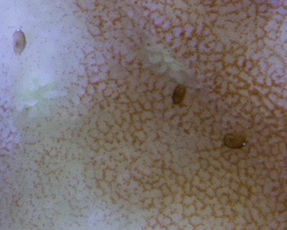
Figure 5. Copepods on a Montipora specimen. Notice the eye spots. Photo courtesy of Steve Ruddy (www.coralreefecosystems.com).
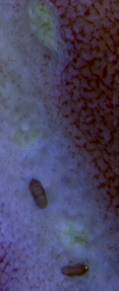
Figure 6. Another photo of the Montipora copepods. Note the segmentation, color, eye spot, and first antennae. Photo courtesy of Steve Ruddy (www.coralreefecosystems.com).

Figure 7. A photomicrograph of a ‘black bug’ found on a Montipora specimen – it appears to be a Tegastes or Parategastes species. These bugs are small – only about 0.34mm, and will be discussed in Part 3 of this series. Photo by the author.
Copepods – Vectors of Disease?
Ivanenko and Smurov (1996) raise the interesting possibility that copepods might introduce pathogens to its host. This could perhaps explain why some copepods infestations are relatively harmless, while seemingly mild cases of parasitism cause rapid decline and death of the host. As a footnote, the pathogenic bacteria Vibrio has been found attached to some copepods’ exoskeletons (though not specifically ‘coral’ copepods or any Vibrio species known to infect scleractinians).
Food for thought here.
Comments about Information in the Following Database
The following lists include information on copepod maximum sizes, specimen color, as well as drawings. First, my renderings are crude reproductions of excellent camera lucida drawings made by copepod researchers Humes, Stock and others. In all cases, those wishing to identify copepods should refer to the original papers.
- Maximum lengths are reported for most of the following taxa. These lengths do not include the length of the ‘tail’ (fural rami). Bear in mind that these listings are based on sometimes limited observations of just a few specimens. In a couple of cases, only one sex of a particular species has been collected, and sometimes described from a single specimen
- Color is listed for many taxa, and these are based on the apparent color of the copepod when light is transmitted through a specimen by a microscope lamp. Color due to transmitted light is different from the color when light is reflected. To further complicate matters, the parasite might incorporate into its tissues those pigments obtained from the host (as is probably the case in red Orstomella copepods feeding on Favia tissues). Some of these pigments might be fluorescent (see Figure 140) and spectral quality of the light falling upon the animal and the quantum yield of the pigment can alter the perceived color.
- Coral species are listed as described in the original papers. Coral taxonomy remains in a constant state of flux, and I have made little attempt to revise the descriptions as listed in the original journal papers.
- Copepod classifications are occasionally revised, and this has occurred since some of the initial descriptions were published. For example, parasites of the genus Lichomolgus, although plentiful in early publications, have all been assigned to other genera. This website was used as a reference of revisions: WoRMS (World Register of Marine Species) at http://www.marinespecies.org/
- Lateral views (taken from the side), dorsal views (from the top looking down) and ventral views (from the bottom looking up) reveal differing portraits of ‘bugs’. Be aware that the angle of observation can show profoundly differing portraits.
- Do not assume that one bug is representative of all those on a coral colony. Humes (1994) states that single colonies of Acropora hyacinthus, A. gravida, and Montipora undata were each found to host up to 9 parasitic Xarifia species.
- Arthur Humes, the late guru of copepods, found that identifying copepods to the species level is much easier if female specimens are used.
Now that we have some background on copepods, we can begin our discussion of coral parasites.
Stony Coral Parasites
Copepods of Order Cyclopoida
Corallonoxia and Corallovexia have been described from only Atlantic corals. You may wonder why Atlantic parasites are included in an article for reef hobbyists since most but not all corals from this regional are illegal to possess. A few corals (such as Manicina areolata, sea whips, sea fans, etc. or those found on ‘farmed’ live rock) are legally available, hence the inclusion of Atlantic parasites here.
Corallonoxia baki
- Host: Eusmilia fastigata
- Order Cyclopoida
- Family Corallovexiidae
- Maximum Reported Size: ?
- Maximum Reported Size: ?
- Color: ?
- Locality: West Indies (Atlantic)
- Reference: Stock, 1975
Corallonoxia longicauda
- Host: Meandrina meandrites
- Order Cyclopoida
- Family Corallovexiidae
- Maximum Reported Size: ?
- Maximum Reported Size: ?
- Color: ?
- Locality: West Indies (Atlantic)
- Reference: Stock, 1975
Corallovexia brevibrachium
- Host: Diploria labyrinthformis
- Order Cyclopoida
- Family Corallovexiidae
- Maximum Reported Size: ?
- Maximum Reported Size: ?
- Color: ?
- Locality: West Indies (Atlantic)
- Reference: Stock, 1975
Corallovexia dorospina
- Host: Montastrea cavernosa
- Order Cyclopoida
- Family Corallovexiidae
- Maximum Reported Size: ?
- Maximum Reported Size: ?
- Color: ?
- Locality: West Indies (Atlantic)
- Reference: Stock, 1975

Figure 8. Montastrea cavernosa, an Atlantic coral species, may be infested with the parasitic copepod Corallovexia dorospina. Photo courtesy Jake Adams and www.coralIDea.com
Corallovexia kristenseni
- Host: Colpophyllia natans
- Order Cyclopoida
- Family Corallovexiidae
- Maximum Reported Size: ?
- Maximum Reported Size: ?
- Color: ?
- Locality: West Indies (Atlantic)
- Reference: Stock, 1975
Corallovexia longibrachium
- Host: Manicina areolata
- Order Cyclopoida
- Family Corallovexiidae
- Maximum Reported Size: ?
- Maximum Reported Size: ?
- Color: ?
- Locality: West Indies (Atlantic)
- Reference: Stock, 1975

Figure 9. Manicina areolata is the preferred host of the parasite Corallovexia longibrachium. These Atlantic corals are now legally available in the pet trade. Photo courtesy of Jake Adams and www.coralIDea.com.
Corallovexia mediobrachium
- Host: Diploria strigosa
- Order Cyclopoida
- Family Corallovexiidae
- Maximum Reported Size: ?
- Maximum Reported Size: ?
- Color: ?
- Locality: West Indies (Atlantic)
- Reference: Stock, 1975
Corallovexia mixtibrachium
- Host: Colpophyllia natans
- Order Cyclopoida
- Family Corallovexiidae
- Maximum Reported Size: ?
- Maximum Reported Size: ?
- Color: ?
- Locality: West Indies (Atlantic)
- Reference: Stock, 1975
Corallovexia similis
- Host: Acropora palmata
- Order Cyclopoida
- Family Corallovexiidae
- Maximum Reported Size: ?
- Maximum Reported Size: ?
- Color: ?
- Locality: West Indies (Atlantic)
- Reference: Stock, 1975

Figure 10. The endangered coral Acropora palmata is sometimes home to the parasitic copepod Corallovexia similis. These corals may someday be available to hobbyists as techniques of raising planula larvae are refined. Photo courtesy of Jake Adams and www.CoralIDea.com.
Corallovexia ventrospinosa
- Host: Montastrea brasiliana
- Order Cyclopoida
- Family Corallovexiidae
- Maximum Reported Size: ?
- Maximum Reported Size: ?
- Color: ?
- Locality: West Indies (Atlantic)
- Reference: Stock, 1975
Stony Coral Parasites
Copepods of Order Poecilostomatoida
Now, to begin our brief review of known parasites of Pacific corals, beginning with:
Amarda compta
- Host: Favia sp.
- Order Poecilostomatoida
- Family Anchimolgidae
- Maximum Reported Size (female): 1.20mm
- Maximum Reported Size (male): 0.85mm
- Color: Opaque, red eye
- Locality: Madagascar
- Reference: Humes and Stock, 1972
Amarda cultrata
- Host: Favia sp.
- Order Poecilostomatoida
- Family Anchimolgidae
- Maximum Reported Size (female): 1.68mm
- Maximum Reported Size (male): 1.37mm
- Color: Opaque, red eye
- Locality: Madagascar
- Reference: Humes and Stock, 1972
Amarda curvus
- Host: Goniastrea retiformis
- Order Poecilostomatoida
- Family Anchimolgidae
- Reference: Kim, 2007
- Amarda goniastraea
- Host: Goniastrea retiformis
- Order Poecilostomatoida
- Family Anchimolgidae
- Reference: Humes, 1985
Anchimolgus abbreviatus
- Host: Acrhelia horrescens
- Order Poecilostomatoida
- Family Anchimolgidae
- Reference: Humes, 1991
- Anchimolgus angustus
- Host: Gardinoseris planulata
- Order Poecilostomatoida
- Family Anchimolgidae
- Reference: Humes, 1992
Anchimolgus brevarius
- Host: Goniopora stokesi
- Order Poecilostomatoida
- Family Anchimolgidae
- Reference: Humes, 1995
- Anchimolgus compressus
- Host: Galaxea fascicularis
- Order Poecilostomatoida
- Family Anchimolgidae
- Reference: Humes, 1996
Anchimolgus conformatus
- Host: Goniopora sp.
- Order Poecilostomatoida
- Family Anchimolgidae
- Reference: Humes, 1995
- Anchimolgus contractus
- Host: Galaxea fascicularis
- Order Poecilostomatoida
- Family Anchimolgidae
- Reference: Humes, 1979
Anchimolgus convexus
- Host: Parahalometra robusta
- Order Poecilostomatoida
- Family Anchimolgidae
- Reference: Humes, 1978
- Anchimolgus digitatus
- Host: Goniopora sp.
- Order Poecilostomatoida
- Family Anchimolgidae
- Maximum Reported Size (female): 2.0mm
- Maximum Reported Size (male): 1.62mm
- Color: Translucent, dark red eye
- Locality: Madagascar
- Reference: Humes and Ho, 1968a
Anchimolgus eparmatoides
- Host: Gardinoseris planulata
- Order Poecilostomatoida
- Family Anchimolgidae
- Reference: Humes and Stock, 1972
Anchimolgus exsertus
- Host: Echinophyllia horrida
- Order Poecilostomatoida
- Family Anchimolgidae
- Reference: Humes, 1991
Anchimolgus gibberulus
- Host: Gardinoseris planulata
- Order Poecilostomatoida
- Family Anchimolgidae
- Reference: Humes, 1992
Anchimolgus gigas
- Host: Goniopora stokesi
- Order Poecilostomatoida
- Family Anchimolgidae
- Reference: Humes and Stock, 1995
Anchimolgus gracilipes
- Host: Pavona danai
- Order Poecilostomatoida
- Family Anchimolgidae
- Reference: Kim, 2007
Anchimolgus hastatus
- Host: Fungia sp.
- Order Poecilostomatoida
- Family Anchimolgidae
- Reference: Kim, 2007
Anchimolgus latens
- Host: Fungia echinata
- Order Poecilostomatoida
- Family Anchimolgidae
- Reference: Humes, 1978
Anchimolgus maximus
- Host: Fungia cocinnia
- Order Poecilostomatoida
- Family Anchimolgidae
- Reference: Kim, 2003

Figure 14. Fungia cocinnia is subject to stress by parasitic copepods. Photo courtesy Steve Ruddy and www.coralreefecosystems.com
Anchimolgus mimeticus
- Host: Goniopora sp.
- Order Poecilostomatoida
- Family Anchimolgidae
- Reference: Humes, 1995
Anchimolgus moluccanus
- Host: Galaxea fascicularis
- Order Poecilostomatoida
- Family Anchimolgidae
- Reference: Humes, 1996
Anchimolgus multidentatus
- Host: Alveopora catalai
- Order Poecilostomatoida
- Family Anchimolgidae
- Reference: Kim, 2003
Anchimolgus nastuas
- Host: Galaxea fascicularis
- Order Poecilostomatoida
- Family Anchimolgidae
- Reference: Humes, 1996
Anchimolgus noumensis
- Host: Seriatopora hystrix
- Order Poecilostomatoida
- Family Anchimolgidae
- Reference: Kim, 2003
Anchimolgus orectus
- Host: Fungia paumotensis
- Order Poecilostomatoida
- Family Anchimolgidae
- Reference: Humes, 1978
Anchimolgus pandus
- Host: Fungia echinata
- Order Poecilostomatoida
- Family Anchimolgidae
- Reference: Humes, 1978
Anchimolgus paragensis
- Host: Hydnophora microconus
- Order Poecilostomatoida
- Family Anchimolgidae
- Reference: Kim, 2007
Anchimolgus prolixipes
- Host: Porites (andrewsi?) and Porites nigrescens
- Order Poecilostomatoida
- Family Anchimolgidae
- Maximum Reported Size (female): 1.15mm
- Maximum Reported Size (male): 0.85mm
- Color: Translucent to opaque, red eye
- Locality: Madagascar
- Reference: Humes and Ho, 1968a
Anchimolgus punctilis
- Host: Pocillopora damicornis
- Order Poecilostomatoida
- Family Anchimolgidae
- Reference: Humes, 1978
Anchimolgus stellus
- Host: Gardinoseris planulata
- Order Poecilostomatoida
- Family Anchimolgidae
- Reference: Humes, 1972
Anchimolgus tanaus
- Host: Acrhelia horrescens
- Order Poecilostomatoida
- Family Anchimolgidae
- Reference: Humes, 1991
Anchimolgus tenuipes
- Host: Seriatopora hystrix
- Order Poecilostomatoida
- Family Anchimolgidae
- Reference: Kim, 2003
Anchimolgus tridentatus
- Host: Echinopora lamellosa
- Order Poecilostomatoida
- Family Anchimolgidae
- Reference: Kim, 2003
Andrianellus exsertidens
- Host: Favia sp., Platygyra daedala
- Order Poecilostomatoida
- Family Anchimolgidae
- Maximum Reported Size (female): 1.33mm
- Maximum Reported Size (male): 1.22mm
- Color: Opaque, red eye
- Locality: Madagascar
- Reference: Humes and Stock, 1973
Andrianellus papillipes
- Host: Platygyra ryukyuensis
- Order Poecilostomatoida
- Family Anchimolgidae
- Reference: Kim, 2007
Armadopsis merulinae
- Host: Merulina ampliata
- Order Poecilostomatoida
- Family Anchimolgidae
- Maximum Reported Size (female): 1.57mm
- Maximum Reported Size (male): 1.41mm
- Color: Opaque, intestine orange-red, red eye, egg sacs gray.
- Locality: New Caledonia
- Reference: Humes, 1974
Cerioxynus alatus
- Host: Favia favus
- Order Poecilostomatoida
- Family Anchimolgidae
- Maximum Reported Size (female): 1.60mm
- Maximum Reported Size (male): 1.39mm
- Color: Opaque, intestine orange-brown, red eye, egg sacs gray.
- Locality: New Caledonia
- Reference: Humes, 1974
Cerioxynus bandensis
- Host: Favites virens
- Order Poecilostomatoida
- Family Anchimolgidae
- Reference: Humes, 1979
Cerioxynus favitocolus
- Host: Favites halicora
- Order Poecilostomatoida
- Family Anchimolgidae
- Maximum Reported Size (female): 1.12mm
- Maximum Reported Size (male): 0.88mm
- Color: Opaque, alimentary canal slightly brown, red eye, egg sacs gray.
- Locality: New Caledonia
- Reference: Humes, 1974
Cerioxynus moluccensis
- Host: Favites pentagonia
- Order Poecilostomatoida
- Family Anchimolgidae
- Locality: Great Barrier Reef
- Reference: Humes, 1979
Cerioxynus montastreae
- Host: Montastrea curta
- Order Poecilostomatoida
- Family Anchimolgidae
- Locality: Great Barrier Reef
- Reference: Humes, 1994
Cerioxynus oulophylliae
- Host: Oulophyllia crispa
- Order Poecilostomatoida
- Family Anchimolgidae
- Locality: Moluccas Islands and the Great Barrier Reef, Australia
- Reference: Humes, 1994
Dumbeana undulatipes
- Host: Psammocora togianensis and P. logianensis
- Order Poecilostomatoida
- Family Anchimolgidae
- Locality: Sabiura
- Reference: Misaki, 1978; Humes, 1996
Ecphysarion ampullulum
- Host: Acropora rosaria
- Order Poecilostomatoida
- Family Anchimolgidae
- Reference: Humes, 1993
Ecphysarion lobophorum
- Host: Acropora scherzeriana, Acropora cytheria, Acropora florida, Acropora sp.
- Order Poecilostomatoida
- Family Anchimolgidae
- Maximum Reported Size (female): 1.36mm
- Maximum Reported Size (male): 1.19mm
- Color: Amber, red eye, egg sacs gray
- Locality: Madagascar
- Reference: Described as Lichomolgus lobophorus, Humes and Ho, 1968a
- Also described elsewhere as Schedomolgus lobophorus.
Ecphysarion spinulatum
- Host: Acropora palifera
- Order Poecilostomatoida
- Family Anchimolgidae
- Reference: Humes, 1993
Gelastomolgus spondyli
- Host: Plerogyra sp.
- Maximum Reported Size (female): 1.16mm
- Maximum Reported Size (male): 0.59mm
- Order Poecilostomatoida
- Family Anchimolgidae
- Reference: Humes and Stock, 1973
- Comment: There is some suspicion that Plerogyra is not the primary host of this copepod, and that its presence may have been accidental.
Haplomolgus incolumis
- Host: Montipora caliculata
- Order Poecilostomatoida
- Family Anchimolgidae
- Reference: Humes and Ho, 1968
Haplomolgus montiporae
- Host: Montipora sinensis, Montipora stellata
- Order Poecilostomatoida
- Family Anchimolgidae
- Maximum Reported Size (female): 0.89mm
- Maximum Reported Size (male): 0.90mm
- Color: Slightly amber, red eye, egg sacs grayish-black
- Locality: Madagascar
- Reference: Humes and Ho, 1968a
Haplomolgus subdeficiens
- Host: Montipora undata
- Order Poecilostomatoida
- Family Anchimolgidae
- Reference: Humes, 1978
Humesiella corallicola
- Host: Hydnophora sp.
- Order Poecilostomatoida
- Family Anchimolgidae
- Maximum Reported Size (female): ?
- Maximum Reported Size (male): ?
- Color: ?
- Locality: SE Indian Coast
- Reference: Sebastian and Pillai, 1973
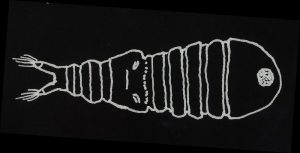
Figure 24. Humesiella corallicola, male, dorsal view, a parasite of the stony coral Hydnophora. After Sebastian and Pillai, 1973.
Family: Lichomolgidae: Lichomolgus species are often mentioned in early reference works. Since those publications, many species have been assigned to other genera.
Lichomolgus arcuatipes: See Schedomolgus arcuatipes
Lichomolgus campulus: See Odontomolgus campulus
Lichomolgus crassus: See Spaniomolgus crassus
Lichomolgus digitatus: SeeAnchiomolgus digitatus
Lichomolgus geminus: See Spaniomolgus geminus
Lichomolgus prolixipes: See Anchiomolgus prolixipes
Lichomolgus lobophorus: See Ecphysarion lobophorum (Also described as Schedomolgus lobophorus)
Lipochaetes extrusus
- Host: Psammocora logianensis
- Order Poecilostomatoida
- Family Anchimolgidae
- Reference: Humes, 1996
Odontomolgus actinophorus
- Host: Pavona angularis, Pavona angulata, Pavona cactus, Pavona danai, and Pavona venusta
- Order Poecilostomatoida
- Family Anchimolgidae
- Maximum Reported Size (female): ?
- Maximum Reported Size (male): ?
- Color: Red eye
- Locality: Madagascar
- Reference: Humes and Stock, 1973
Odontomolgus bulbalis
- Host: Merulina ampliata
- Order Poecilostomatoida
- Family Anchimolgidae
- Reference: Humes, 1991
Odontomolgus campulus
- Host: Alveopora sp. and Goniopora sp.
- Order Poecilostomatoida
- Family Anchimolgidae
- Maximum Reported Size (female): 1.26mm
- Maximum Reported Size (male): 1.17mm
- Color: Slightly opaque, red eye
- Locality: Madagascar
- Reference: Humes and Ho, 1968a
Odontomolgus decens
- Host: Heliofungia actiniformis
- Order Poecilostomatoida
- Family Anchimolgidae
- Reference: Humes & Stock, 1972
Odontomolgus exilipes
- Host: Psammocora samoensis
- Order Poecilostomatoida
- Family Anchimolgidae
- Reference: Kim, 2003
Odontomolgus flammeus
- Host: Fungia sp.
- Order Poecilostomatoida
- Family Anchimolgidae
- Reference: Kim, 2007
Odontomolgus forhani
- Host: Montipora compressa
- Order Poecilostomatoida
- Family Anchimolgidae
- Reference: Humes and Stock, 1972
Odontomolgus fultus
- Host: Halomitra pileus
- Order Poecilostomatoida
- Family Anchimolgidae
- Reference: Humes and Stock, 1972
Odontomolgus geminus
- Host: Psammocora samoensis
- Order Poecilostomatoida
- Family Anchimolgidae
- Reference: Kim, 2003
Odontomolgus mucosus
- Host: Gardineroseris planulata
- Order Poecilostomatoida
- Family Anchimolgidae
- Reference: Kim, 2006
Odontomolgus mundulus
- Host: Alveopora mortenseni
- Order Poecilostomatoida
- Family Anchimolgidae
- Reference: Humes, 1974
Odontomolgus parvus
- Host: Goniastrea retiformis
- Order Poecilostomatoida
- Family Anchimolgidae
- Reference: Kim, 2007
Odontomolgus pavonus
- Host: Pavona danai
- Order Poecilostomatoida
- Family Anchimolgidae
- Reference: Kim, 2007
Odontomolgus pumulis
- Host: Gardineroseris planulata
- Order Poecilostomatoida
- Family Anchimolgidae
- Reference: Humes, 1992
Odontomolgus rhadinus
- Host: Psammocora contigua, Psammocora spp. and Pavona sp.
- Order Poecilostomatoida
- Family Anchimolgidae
- Maximum Reported Size (female): ?
- Maximum Reported Size (male): ?
- Color: Red eye
- Locality: Madagascar
- Reference: Humes and Stock, 1973
Odontomolgus scitulus
- Host: Fungia fungites
- Order Poecilostomatoida
- Family Anchimolgidae
- Reference: Humes, 1973
Odontomolgus unioviger
- Host: Gardineroseris planulata
- Order Poecilostomatoida
- Family Anchimolgidae
- Reference: Kim, 2006
Panjakus bidentis
- Host: Pocillopora verrucosa
- Order Poecilostomatoida
- Family Anchimolgidae
- Reference: Kim, 2004
Panjakus directis
- Host: Leptoria tenuis
- Order Poecilostomatoida
- Family Anchimolgidae
- Reference: Humes, 1995
Panjakus eumeces
- Host: Hydnophora rigida
- Order Poecilostomatoida
- Family Anchimolgidae
- Reference: Humes, 1991
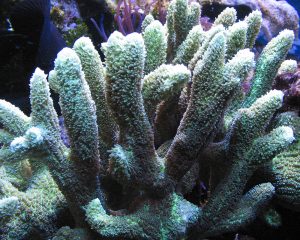
Figure 28. Hydnophora colonies are subject to infestation by a number of parasitic copepods. Photo courtesy of Steve Ruddy and www.coralreefecosystems.com.
Panjakus fastigatus
- Host: Platygyra ryukyuensis
- Order Poecilostomatoida
- Family Anchimolgidae
- Reference: Kim, 2005
Panjakus hydnophorae
- Hosts: Hydnophora exesa, Hydnophora tenella, Hydnophora sp.
- Order Poecilostomatoida
- Family Anchimolgidae
- Maximum Reported Size (female): 1.42mm
- Maximum Reported Size (male): 1.33mm
- Color: Brownish opaque with a few reddish-brown spots, red eye, egg sacs gray
- Locality: New Caledonia
- Reference: Humes and Stock, 1973
Panjakus iratus
- Host: Hydnophora microconus
- Order Poecilostomatoida
- Family Anchimolgidae
- Reference: Kim, 2005
Panjakus necopinus
- Host: Leptoria tenuis
- Order Poecilostomatoida
- Family Anchimolgidae
- Reference: Humes, 1995
Panjakus parvipes
- Host: Platygyra ryukyuensis
- Order Poecilostomatoida
- Family Anchimolgidae
- Reference: Kim, 2005
Panjakus platygyrae
- Hosts: Platygyra lamellina, Platygyra daedala
- Order Poecilostomatoida
- Family Anchimolgidae
- Maximum Reported Size (female): 1.53mm
- Maximum Reported Size (male): 1.36mm
- Color: Opaque, intestine slightly yellowish, dark red eye
- Locality: New Caledonia
- Reference: Humes and Stock, 1973
Panjakus saccipes
- Host: Hydnophora microconus
- Order Poecilostomatoida
- Family Anchimolgidae
- Reference: Kim, 2005
Prionomolgus lanceolatus
- Host: Pachyseris speciosa
- Order Poecilostomatoida
- Family Anchimolgidae
- Maximum Reported Size (female): 1.42mm
- Maximum Reported Size (male): 1.08mm
- Color: Translucent, red eye, egg sacs gray
- Locality: Madagascar
- Reference: Humes and Ho, 1968a
Rakotoa ceramensis
- Host: Favites pentagona
- Order Poecilostomatoida
- Family Anchimolgidae
- Reference: Humes, 1979
Rakotoa proteus
- Host: Favia sp.
- Order Poecilostomatoida
- Family Anchimolgidae
- Maximum Reported Size (female): 1.64mm
- Maximum Reported Size (male): 1.55mm
- Color: Opaque gray, intestine is reddish, eye is not visible
- Locality: Madagascar
- Reference: Humes and Stock, 1973
Schedomolgus arcuatipes
- Host: Acropora palifera
- Order Poecilostomatoida
- Family Anchimolgidae
- Maximum Reported Size (female): 1.11mm
- Maximum Reported Size (male): 1.28mm
- Color: Translucent to opaque, red eye, egg sacs gray
- Locality: Madagascar
- Reference: Described as Lichomolgus arcuatipes, Humes and Ho, 1968a
Schedomolgus dumbensis
- Host: Fungia fungites
- Order Poecilostomatoida
- Family Anchimolgidae
- Reference: Kim, 2003
Schedomolgus exiliculus
- Host: Acropora palifera
- Order Poecilostomatoida
- Family Anchimolgidae
- Reference: Humes, 1993
Schedomolgus idanus
- Host: Acropora patula
- Order Poecilostomatoida
- Family Anchimolgidae
- Reference: Humes, 1993
Schedomolgus insignellus
- Host: Acropora valida
- Order Poecilostomatoida
- Family Anchimolgidae
- Reference: Humes and Stock, 1972
Schedomolgus lobophorus: See Ecphysarion lobophorum. Also described as Lichomolgus lobophorum
Schedomolgus majusculus
- Host: Acropora rosaria
- Order Poecilostomatoida
- Family Anchimolgidae
- Reference: Humes and Stock, 1972
Schedomolgus tener
- Host: Fungia echinata
- Order Poecilostomatoida
- Family Anchimolgidae
- Reference: Humes, 1993
Schedomolgus tenuicaudatus
- Host: Acropora Rosaria
- Order Poecilostomatoida
- Family Anchimolgidae
- Reference: Kim, 2003
Schedomolgus walteri
- Host: Lobophyllia corymbosa
- Order Poecilostomatoida
- Family Anchimolgidae
- Reference: Kim, 2003
Scyphuliger cyphuliger
- Host: Acropora exilis
- Order Poecilostomatoida
- Family Anchimolgidae
- Reference: Humes, 1993
Scyphuliger concavipes
- Host: Acropora hyacinthus
- Order Poecilostomatoida
- Family Anchimolgidae
- Reference: Humes, 1991
Scyphuliger eumorphus
- Host: Acropora hyacinthus
- Order Poecilostomatoida
- Family Anchimolgidae
- Reference: Humes, 1993
Scyphuliger humesi
- Host: Acropora squarrosa
- Order Poecilostomatoida
- Family Anchimolgidae
- Reference: Kim, 2004
Scyphuliger karangmmiensis
- Host: Acropora intermedia
- Order Poecilostomatoida
- Family Anchimolgidae
- Reference: Kim, 2007
Scyphuliger latus
- Host: Acropora exilis
- Order Poecilostomatoida
- Family Anchimolgidae
- Reference: Kim, 2003
Scyphuliger longicaudus
- Host: Acropora convexa
- Order Poecilostomatoida
- Family Anchimolgidae
- Reference: Kim, 2003
Scyphuliger manifestus
- Host: Acropora hyacinthus
- Order Poecilostomatoida
- Family Anchimolgidae
- Reference: Humes, 1991
Scyphuliger paucisuruculus
- Host: Acropora exilis
- Order Poecilostomatoida
- Family Anchimolgidae
- Reference: Kim, 2003
Scyphuliger pennatus
- Host: Acropora corymbosa
- Order Poecilostomatoida
- Family Anchimolgidae
- Reference: Kim, 2003
Scyphuliger pilosus
- Host: Acropora corymbosa
- Order Poecilostomatoida
- Family Anchimolgidae
- Reference: Kim, 2003
Scyphuliger placious
- Host: Acropora squarrosa
- Order Poecilostomatoida
- Family Anchimolgidae
- Reference: Kim, 2004
Scyphuliger tenuatis
- Host: Acropora cymbicyanthus
- Order Poecilostomatoida
- Family Anchimolgidae
- Reference: Humes, 1990
Scyphuliger vicinus
- Host: Acropora squarrosa
- Order Poecilostomatoida
- Family Anchimolgidae
- Reference: Kim, 2004
Stockia indica
- Host: Favia sp.
- Order Poecilostomatoida
- Family Anchimolgidae
- Reference: Humes, 1994
Unicispina latigenitalis
- Host: Acropora palifera
- Order Poecilostomatoida
- Family Anchimolgidae
- Reference: Humes, 1993
Order: Poecilostomatoida
- Family: Clausidiiae
- Genera: Hemicyclops
Hemicyclops regalis
- Host: Porites lobata
- Order Poecilostomatoida
- Family Clausidiiae
- Location: Panama (Pacific)
- Reference: Humes, 1994
Order: Poecilostomatoida
- Family: Rhynchomolgidae
- Genera: Diallagomolgus, Kombia, Mandobius, Monomolgus, Ravahina, Spaniomolgus, Xenomolgus, Wedanus
Diallagomolgus productus
- Host: Cyphastrea chalcidicum and Cyphastrea gardineri
- Order: Poecilostomatoida
- Family: Rhynchomolgidae
- Maximum Reported Size (female): 1.43mm
- Maximum Reported Size (male): 1.25mm
- Color: Opaque with a few reddish globules in prosome (body), intestine brown, red eye, egg sacs gray
- Locality: New Caledonia
- Reference: Humes, 1979
Diallagomolgus vicinus
- Host: Cyphastrea chalcidicum
- Order: Poecilostomatoida
- Family: Rhynchomolgidae
- Maximum Reported Size (female): 1.27mm
- Maximum Reported Size (male): 1.09mm
- Color: Opaque, intestine brown, red eye, egg sacs gray
- Locality: New Caledonia
- Reference: Humes, 1979
Kombia angulata
- Host: Psammocora sp., Porites nigrescens, and Porites somaliensis
- Order: Poecilostomatoida
- Family: Rhynchomolgidae
- Location: Madagascar
- Reference: Humes, 1962
Kombia avitus
- Host: Porites sp.
- Order: Poecilostomatoida
- Family: Rhynchomolgidae
- Reference: Kim, 2007
Kombia curvata
- Host: Porites lutea
- Order: Poecilostomatoida
- Family: Rhynchomolgidae
- Reference: Nair and Pillai, 1986
Kombia imminens
- Host: Porites monticulosa
- Order: Poecilostomatoida
- Family: Rhynchomolgidae
- Reference: Humes, 1962
Kombia incrassata
- Host: Porites lobata
- Order: Poecilostomatoida
- Family: Rhynchomolgidae
- Reference: Humes, 1984
Mandobius regalis
- Host: Pectinia lactuca
- Order: Poecilostomatoida
- Family: Rhynchomolgidae
- Reference: Humes, 1994
Monomolgus baculigeres
- Host: Porites nigrescens
- Order: Poecilostomatoida
- Family: Rhynchomolgidae
- Reference: Humes, 1979
Monomolgus psammocorae
- Host: Psammocora sp.
- Order: Poecilostomatoida
- Family: Rhynchomolgidae
- Maximum Reported Size (female): ?
- Maximum Reported Size (male): ?
- Color: Red eye
- Locality: Madagascar
- Reference: Humes and Stock, 1973
Monomolgus torulus
- Host: Porites lobata
- Order: Poecilostomatoida
- Family: Rhynchomolgidae
- Reference: Humes, 1984
Monomolgus unihastatus
- Host: Porites (andrewsi?), Porites (nigrescens?), Porites sp.
- Order: Poecilostomatoida
- Family: Rhynchomolgidae
- Maximum Reported Size (female): ?
- Maximum Reported Size (male): ?
- Color: Red eye
- Locality: Madagascar
- Reference: Humes and Stock, 1973
Numboa porosa
- Host: Psammocora togianensis
- Order: Poecilostomatoida
- Family: Rhynchomolgidae
- Maximum Reported Size (female): ?
- Maximum Reported Size (male): ?
- Color: ?
- Locality: ?
- Reference: Humes 1997
Ravahina tumida
Host: Porites (andrewsi?)
- Order: Poecilostomatoida
- Family: Rhynchomolgidae
- Maximum Reported Size (female): ?
- Maximum Reported Size (male): Unknown
- Color: ?
- Locality: Madagascar
- Reference: Humes and Stock, 1973
Spaniomolgus compositus
- Host: Seriatopora octoptera, Seriatopora subseriata, Seriatopora sp.
- Order: Poecilostomatoida
- Family: Rhynchomolgidae
- Maximum Reported Size (female): ?
- Maximum Reported Size (male): ?
- Color: ?
- Locality: Madagascar
- Reference: Humes and Stock, 1973
Spaniomolgus crassus
- Host: Stylophora pistillata, Stylophora mordax, Acropora sp.
- Order: Poecilostomatoida
- Family: Rhynchomolgidae
- Maximum Reported Size (female): 1.44mm
- Maximum Reported Size (male): 1.25mm
- Color: Translucent to opaque with reddish amber areas at base of antennae, red eye
- Locality: Madagascar
- Reference: Described as Lichomolgus crassus, Humes and Ho, 1968a
Spaniomolgus geminus
- Host: Stylophora pistillata, Stylophora mordax, Stylophora sp. and Acropora sp.
- Order: Poecilostomatoida
- Family: Rhynchomolgidae
- Maximum Reported Size (female): 1.61mm
- Maximum Reported Size (male): 1.55mm
- Color: Translucent, red eye, egg sacs Gray
- Locality: Madagascar
- Reference: Described as Lichomolgus geminus, Humes and Ho, 1968a
Wedanus inconstans
- Host: Goniopora tenuidens
- Order: Poecilostomatoida
- Family: Rhynchomolgidae
- Reference: Humes, 1978
Xenomolgus varius
- Host: Porites sp.
- Order: Poecilostomatoida
- Family: Rhynchomolgidae
- Maximum Reported Size (female): 1.76mm
- Maximum Reported Size (male): 1.21mm
- Color: Unknown
- Locality: Maritius Islands
- Reference: Humes and Stock, 1973
This concludes our discussion of stony coral parasites for this time. We’ll examine other ‘bugs’ in next month’s installment. Questions? Comments? Please respond in the comment section below.
| Coral | Parasite |
|---|---|
| Acrhelia horrescens | Anchimolgus abbreviatus |
| Acrhelia horrescens | Anchimolgus tenuipes |
| Acropora convexa | Scyphuliger longicaudus |
| Acropora corymbosa | Scyphuliger pennatus |
| Acropora corymbosa | Scyphuliger pilosus |
| Acropora cymbicyanthus | Scyphuliger tenuatis |
| Acropora exigua | Ecphysarion lobophorum |
| Acropora exilis | Scyphuliger aristoides |
| Acropora exilis | Scyphuliger latus |
| Acropora exilis | Scyphuliger paucisurculus |
| Acropora hyacinthus | Scyphuliger concavipes |
| Acropora hyacinthus | Scyphuliger eumorphus |
| Acropora hyacinthus | Scyphuliger manifestus |
| Acropora intermedia | Scyphuliger karangmiensis |
| Acropora palifera | Ecphysarion spinulatum |
| Acropora palifera | Schedomolgus exciliculus |
| Acropora palifera | Unicispina latigentalis |
| Acropora palmata | Corallavexia similis |
| Acropora palmata | Corallovexia sp. |
| Acropora patula | Schedomolgus idanus |
| Acropora rosaria | Ecphysarion ampullulum |
| Acropora squarrosa (millepora) | Scyphuliger humesi |
| Acropora squarrosa (millepora) | Scyphuliger placidus |
| Acropora squarrosa (millepora) | Scyphuliger vicinus |
| Alveopora catalai | Anchimolgus multidentatus |
| Alveopora mortensi | Odontomolgus mundulus |
| Colpophyllia natans | Corallavexia kristenseni |
| Colpophyllia natans | Corallavexia mixtibrachium |
| Colpophyllia natans | Corallovexia mediobrachium |
| Cyphastrea sp. | Diallagomolgus sp. |
| Diploria clivosa | Corallovexia mediobrachium |
| Diploria labyrinthformis | Corallavexia brevibrachium |
| Diploria strigosa | Corallavexia mediobrachium |
| Echinopora horrida | Anchimolgus exsertus |
| Echinopora lamellosa | Anchimolgus tridentatus |
| Eusmilia fastigata | Corallonoxia baki |
| Favia favus | Cerioxynus alatus |
| Favia sp. | Amarda sp. |
| Favia sp. | Anchimolgus sp. |
| Favia sp. | Andrianellus exsertidens |
| Favia sp. | Rakotoa proteus |
| Favia sp. | Stockia sp. |
| Favites halicora | Cerioxynus faviticolus |
| Favites pentagona | Cerioxynus moluccensis |
| Favites pentagona | Rakotoa ceramensis |
| Favites virens | Cerioxynus bandensis |
| Fungia concinna | Anchimolgus maximus |
| Fungia echinata | Anchimolgus latens |
| Fungia echinata | Anchimolgus pandus |
| Fungia echinata | Schedomolgus tener |
| Fungia fungites | Odontomolgus scitulus |
| Fungia fungites | Schedomolgus dumbensis |
| Fungia paumotensis | Anchimolgus orectus |
| Fungia paumotensis | Anchimolgus punctilis |
| Fungia species | Anchimolgus hastatus |
| Fungia species | Odontomolgus flammeus |
| Galaxea fascicularis | Anchimolgus compressus |
| Galaxea fascicularis | Anchimolgus contractus |
| Galaxea fascicularis | Anchimolgus molccanus |
| Galaxea fascicularis | Anchimolgus nastuas |
| Gardineroseris planulata | Anchimolgus angustus |
| Gardineroseris planulata | Anchimolgus eparmatoides |
| Gardineroseris planulata | Anchimolgus giiberulus |
| Gardineroseris planulata | Anchimolgus setellus |
| Gardineroseris planulata | Odontomolgus mucosus |
| Gardineroseris planulata | Odontomolgus pumulis |
| Gardineroseris planulata | Odontomolgus unioviger |
| Goniastrea retiformis | Amarda curvus |
| Goniastrea retiformis | Amarda goniastraea |
| Goniastrea retiformis | Odontomolgus parvus |
| Goniopora minor | Wedanus inconstans |
| Goniopora minor | Wedanus formosanus |
| Goniopora species | Anchimolgus conformatus |
| Goniopora species | Anchimolgus mimeticus |
| Goniopora stokesi | Anchimolgus brevarius |
| Goniopora stokesi | Anchimolgus gigas |
| Goniopora tenuidens | Wedanus inconstans |
| Halomitra pileus | Odontomolgus fultus |
| Heliofungia actinoformis | Odontomolgus decens |
| Hydnophora exesa | Panjakus hydnophorae |
| Hydnophora microconus | Anchimolgus paragensis |
| Hydnophora microconus | Panjakus iratus |
| Hydnophora microconus | Panjakus saccipes |
| Hydnophora rigida | Panjakus eumeces |
| Hydnophora sp. | Humesiella corallicola |
| Hydnophora sp. | Panjakus hydnophorae |
| Hydnophora sp. | Panjakus sp. |
| Hydnophora tenella | Panjakus hydnophorae |
| Leptoria tenuis | Panjakus directus |
| Leptoria tenuis | Panjakus necopinus |
| Manicina areolata | Corallavexia longibrachium |
| Meandrina meandrites | Corallonoxia baki |
| Meandrina meandrites | Corallovexia sp. |
| Merulina ampliata | Odontomolgus bulbalis |
| Montastrea brasiliana | Corallavexia ventrospina |
| Montastrea cavernosa | Corallavexia dorsospinosa |
| Montastrea cavernosa | Corallavexia dorsospinosa minor |
| Montastrea cavernosa | Corallovexia sp. |
| Montastrea curta | Cerioxynus montastreae |
| Montipora caliculata | Haplomolgus incolumis |
| Montipora compressa | Odontomolgus forhani |
| Montipora undata | Haplomolgus subdeficiens |
| Mycetophyllia lamarckiana | Corallovexia sp. |
| Mycetophyllia lamarckiana | Corallovexia sp. #2 |
| Oulophyllia crispa | Cerioxynus oulophillia |
| Parahalomitra robusta | Anchimolgus convexus |
| Pavona angularis | Odontomolgus actinophorus |
| Pavona angulata | Odontomolgus actinophorus |
| Pavona cactus | Odontomolgus actinophorus |
| Pavona danai | Anchimolgus gracilipes |
| Pavona danai | Odontomolgus actinophorus |
| Pavona danai | Odontomolgus pavonus |
| Pavona venusta | Odontomolgus actinophorus |
| Pectinia lactuca | Mandobius regalis |
| Platygyra astreiformis | Panjakus platygyrae |
| Platygyra daedala | Andrianellus exsertidens |
| Platygyra daedala | Panjakus daedala |
| Platygyra lamellina | Panjakus platygyrae |
| Platygyra ryukyuensis | Andrianellus papillipes |
| Platygyra ryukyuensis | Panjakus fastigatus |
| Platygyra ryukyuensis | Panjakus parvipes |
| Platygyra sp. | Panjakus sp. |
| Pocillopora damicornis | Anchimolgus partenuides |
| Pocillopora verrucosa | Panjakus bidentis |
| Porites (andrewsi?) | Monomolgus unihastatus |
| Porites (nigrescens?) | Monomolgus unihastatus |
| Porites lobata | Hemicyclops regalis |
| Porites lobata | Kombia incrassata |
| Porites lobata | Monomolgus torulus |
| Porites lutea | Kombia curvata |
| Porites monticulosa | Kombia imminens |
| Porites nigrescens | Monomolgus baculigeres |
| Porites sp. | Kombia avitus |
| Psammocora contigua | Odontomolgus actinophorus |
| Psammocora contigua | Odontomolgus rhadinus |
| Psammocora logianensis | Dumbeana undulatipes |
| Psammocora samoensis | Odontomolgus exilipes |
| Psammocora samoensis | Odontomolgus geminus |
| Psammocora sp. | Kombia angulata |
| Psammocora sp. | Monomolgus psammocorae |
| Seriatopora hystrix | Anchimolgus noumensis |
| Seriatopora hystrix | Anchiomolgus tenuipes |


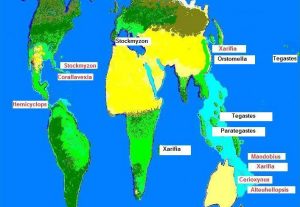
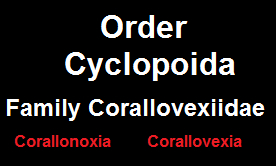

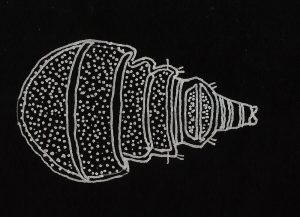

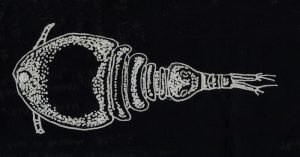

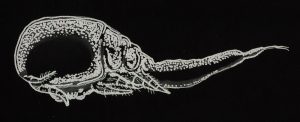
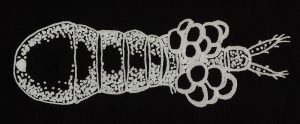
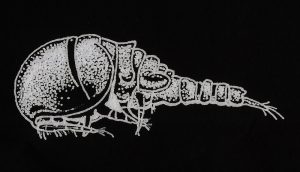
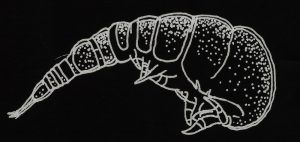
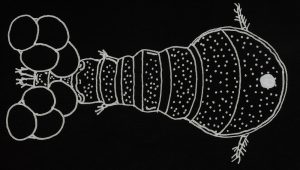
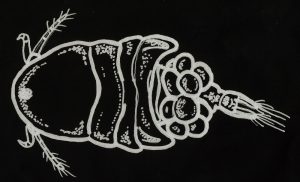

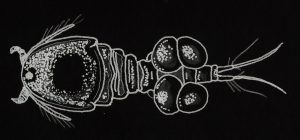
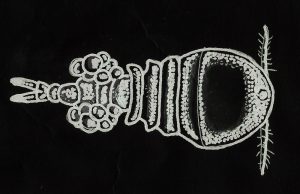
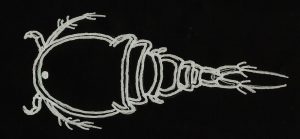
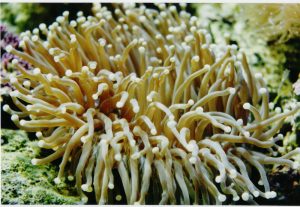

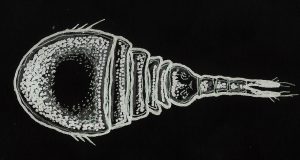
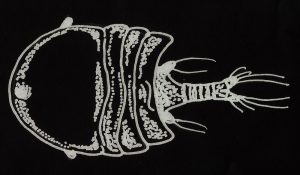
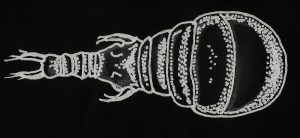
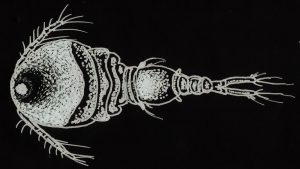
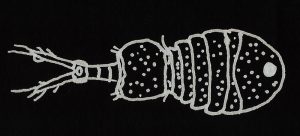
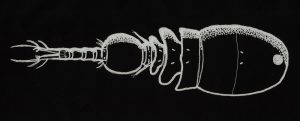
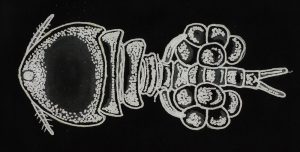
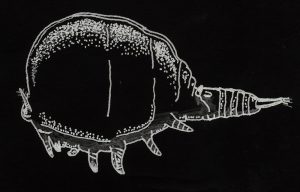
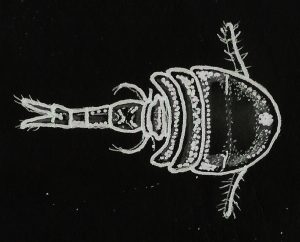


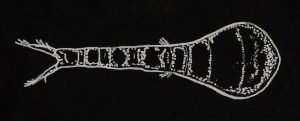
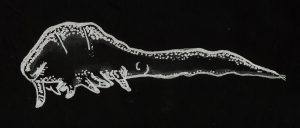

0 Comments